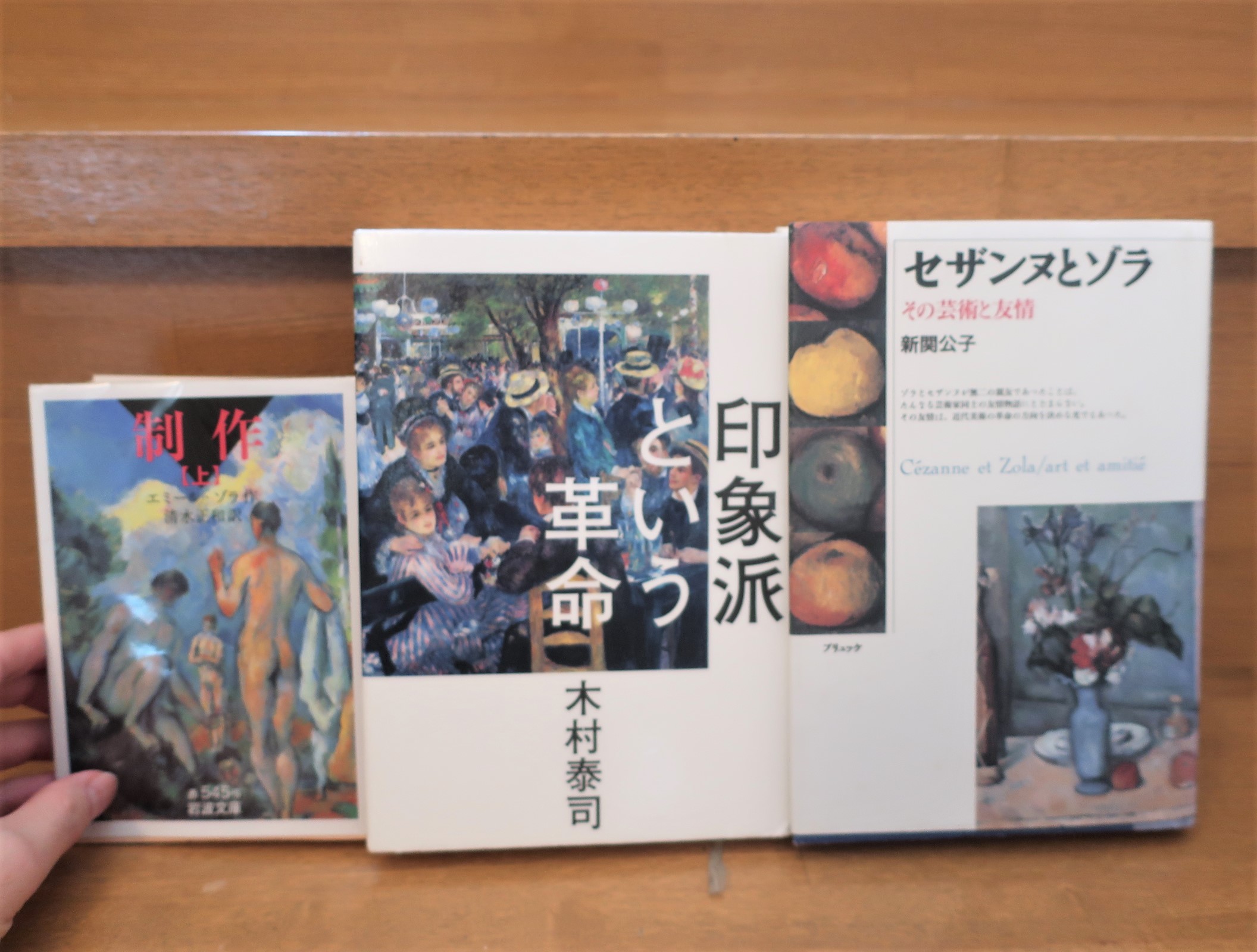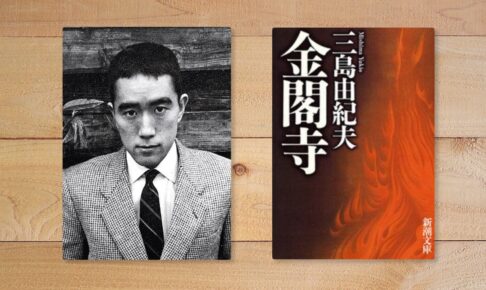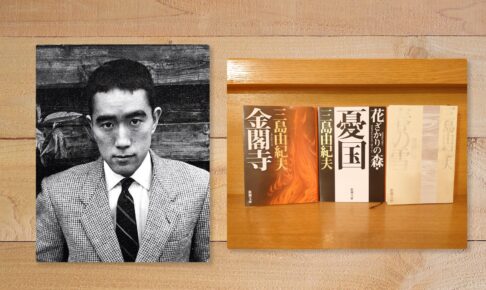Table of Contents
Summary and Comments on "The Impressionist Revolution" by Taiji Kimura - Zola and French Impressionists - Relationship with Cézanne, Manet, and Monet
In the previous articles, we have considered various aspects of "why Zola is minor and Dostoevsky is popular in Japan," but this time we will change our perspective a bit and talk about Zola and French Impressionist paintings.
Zola's "Lugon Makkar Series," Volume 14, which we previously mentioned.Productionis said to be modeled after Impressionist painters, especially Cézanne.
Cézanne is the master of Impressionism. Zola and Cézanne had been classmates at a junior high school in Aix-en-Provence in the south of France since Zola was 15 years old, and they kept in close contact with each other even after they left for Paris. Zola wrote many art criticisms for the development of Impressionism, and Zola himself learned a great deal from the genius of Cézanne. In a sense, the two were allies in opening up the art world.
French Impressionists are very familiar to Japanese people. In this article, I would like to talk about Zola and Impressionism.
What is Impressionism?
To begin with, what is French Impressionism?
Having had little experience with French painting before, I had only heard of the name and did not even know what it was about or who the famous artist was.
However, it grew on me as I read Zola, and when I read Volume 14 of the series, "Creation," and learned of his deep relationship with the Impressionists, I was inspired to learn more about the Impressionists.
First of all, seeing is believing.
Let's take a look at what impressionist paintings are like.
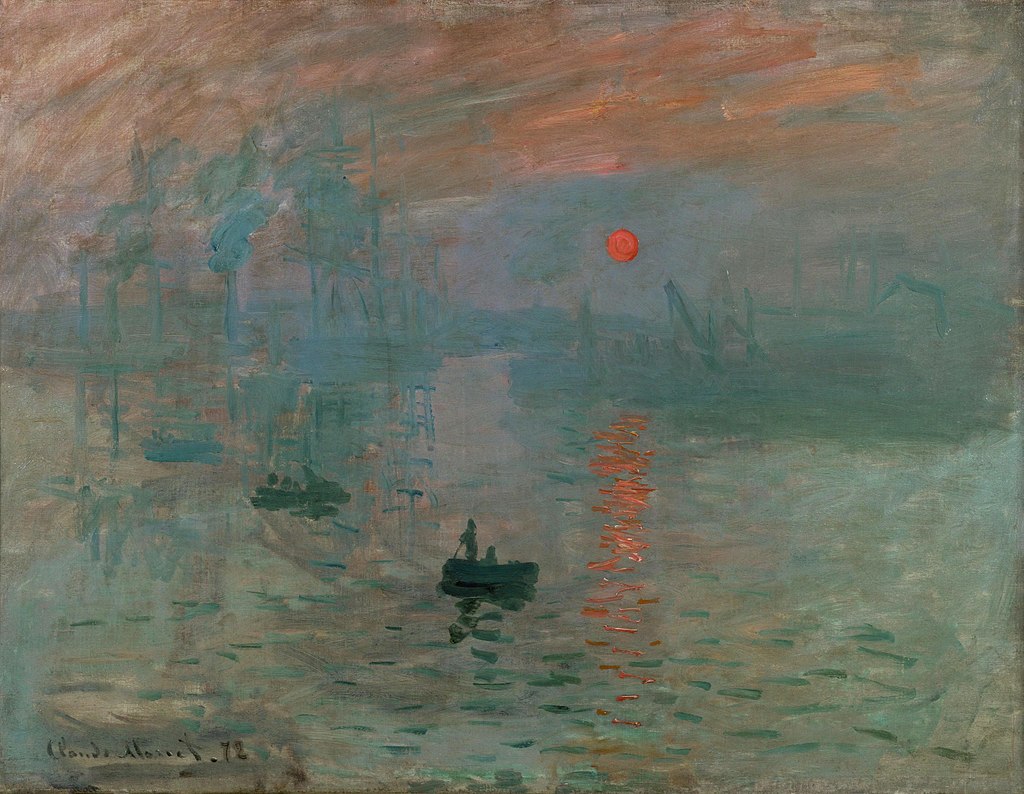
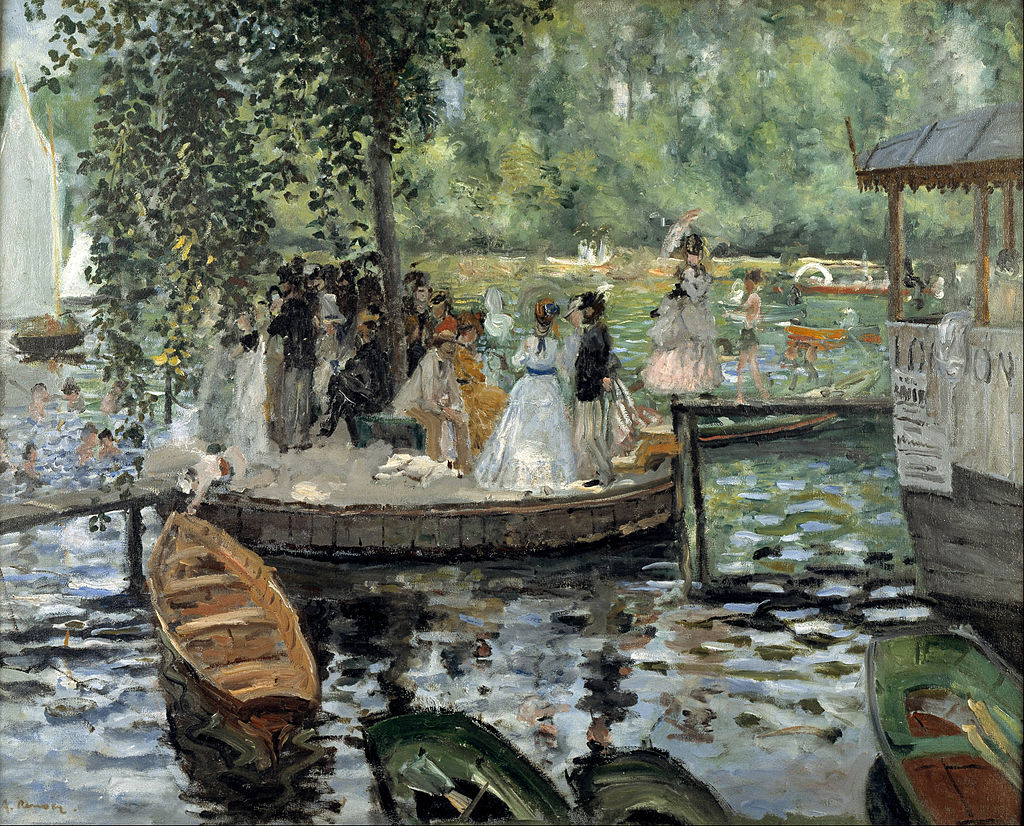
The website "The Museum of Western Art" has a very clear summary of the museum's collection, which you can find here.linkIf you can take a look at the following images, you will get an idea of what we are talking about.
And I was lucky enough to find a great book to help me learn about Impressionist painting.
It was a book titled "The Impressionist Revolution" by Taiji Kimura, published by Shueisha.
The book explains the process that led to the creation of Impressionism and its significance, going back to the movements in the French art world before Impressionism.
The book is filled with really easy-to-understand and interesting stories about how France came to be called the capital of the arts, and how the Paris art world works.
Above all, the program introduces representative paintings in color for each period, so that the characteristics of the paintings can be clearly seen by looking at them while reading the explanations.
I quote from the introduction to the book by Taiji Kimura.
Often, impressionist paintings have a large number of fans worldwide. In other words, its fan base is far wider than that of Renaissance or Baroque paintings. This is because, unlike religious or mythological paintings, many of the themes are easy to understand and many of the works are pleasing to everyone's eyes.
However, the Japanese approach to Impressionist paintings is too "sensibility" oriented and forgets the innovative aspect of their work in art history. Based on my own experience, I believe that this approach reduces the appeal of Impressionism by half.
Shueisha, Taiji Kimura, "The Revolution called Impressionism," p. 47
When the Impressionist painters once emerged, we must remember that their paintings were so revolutionary and avant-garde an art movement in the history of art.
They were revolutionaries of cutting-edge beauty, symbolizing French society during the Second Empire and the Third Republic.
The Impressionists were not an art movement that could simply be described as "appealing to the senses" or "beautiful. There were criticism and ridicule that surged toward them, economic hardships, and human conflicts.
Shueisha, Taiji Kimura, "The Revolution called Impressionism," p. 48
Some line breaks have been made.
In Zola's "Creation," too, the protagonist, the genius painter Claude, was suffering from a lack of recognition by the Academy of Fine Arts and a complete lack of appreciation from the general public.
Impressionism is overwhelmingly popular today, but at the time it was too innovative to be accepted by the traditional conservative art world.
Yasushi Kimura's book explains very clearly what was innovative about Impressionism and why the art world rejected it.
I cannot present it here, so I can only say that if you are interested, please read the book, but if I were to roughly describe one of the characteristics of Impressionism, I would say,
Instead of "painting the picture as it should be," we should "paint the picture as it is."I think this is a good point.
Before Impressionism, sublime historical and religious paintings were considered the most exalted in the art world.
Those paintings depicted what a human being should be, an ideal.
Furthermore, to truly understand these paintings required a high level of artistic theory and aesthetic appreciation. This is an important point.
Such a high level of art was demanded because those who could understand it were the true upper class, a sign of nobility who understood art.
However, instead of such historical or religious paintings, Impressionists began to paint very familiar landscapes and figures.
The subjects of their paintings were no longer lofty historical or religious scenes, but rather they began to depict very ordinary scenes with nothing sublime about them. Whereas the goal had been to paint something perfectly beautiful, the Impressionists rather tried to depict the world as it was right in front of them.
Their style of painting, in which they began to depict things that were taboo to paint at the time and to depict the landscape in front of them as they felt it, came under heavy criticism from conservative people.
In fact, you may have noticed that this is very similar to the accusations hurled at Zola's novel.
Why Zola is minor and Dostoevsky is popular in Japan (1) - Misunderstanding of Zola.As I mentioned in the article "The World of Zola," Zola also observed the world scientifically and tried to depict society as it really is in his novels.
As a result, Zola was criticized as "extremely immoral" and "nothing more than a physical pornographer.
Both Impressionists and Zola tried to depict the world "as it is" rather than "as it should be.
I think this aspect is very important.
Of course, this is not the only definition of impressionism, and there are many more important aspects. However, I would like to focus on the question of whether to depict "what it should be" or "what it is".
I highly recommend Kimura's book as it is very easy to understand and also very interesting and easy to read. If you are interested in this book, please read it.
The relationship between Zola and Cézanne
Now that we have talked about Impressionism, the connection between Zola and Impressionist painters is inseparable.
The close friendship between Cézanne and Zola is especially well known and has been featured in many media and books.
Among them is Kimiko Shinseki's published by Brücke Co.Cézanne and Zola: Their Art and Friendship.was particularly interesting and is presented here in a few words.
Zola and Cézanne were classmates in junior high school and remained close friends even after they left for Paris. However, their friendship ended when Claude, the protagonist of Zola's "Creation," was unable to complete his work and committed suicide, a plot point that is a common theory about their friendship.
However, the Zola/Cézanne abstinence is a theory of later scholars, not an absolute fact, but a common belief. However, the common belief has become so well established that it has become an indisputable fact.
So the author, who has a deep knowledge of Zola and Cézanne, will examine in this book whether Zola and Cézanne really had an extramarital affair.
The book makes me think that it may indeed be unconvincing to say that the two had an abortive relationship.
I am not an expert, so I can't speak to that, but I recommend this book as well because it is very clearly written not only about the relationship between the two men, Zola and Cézanne, but also about the history of Impressionism and Zola's novels.
Zola and the French Impressionists
Also not to be missed is the relationship between Zola and impressionist leader Edouard Manet.
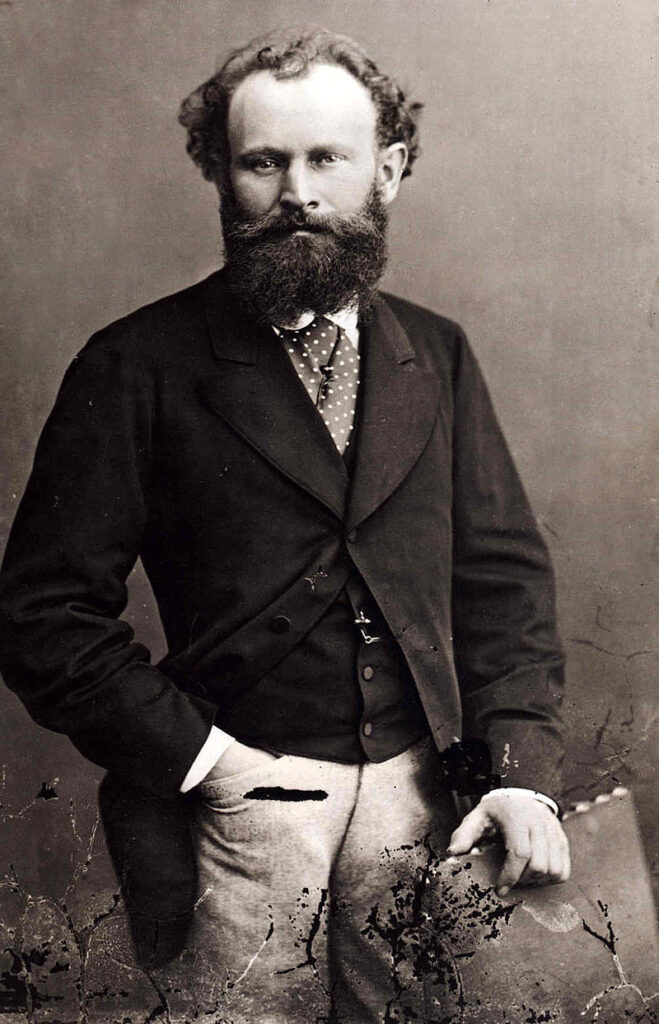
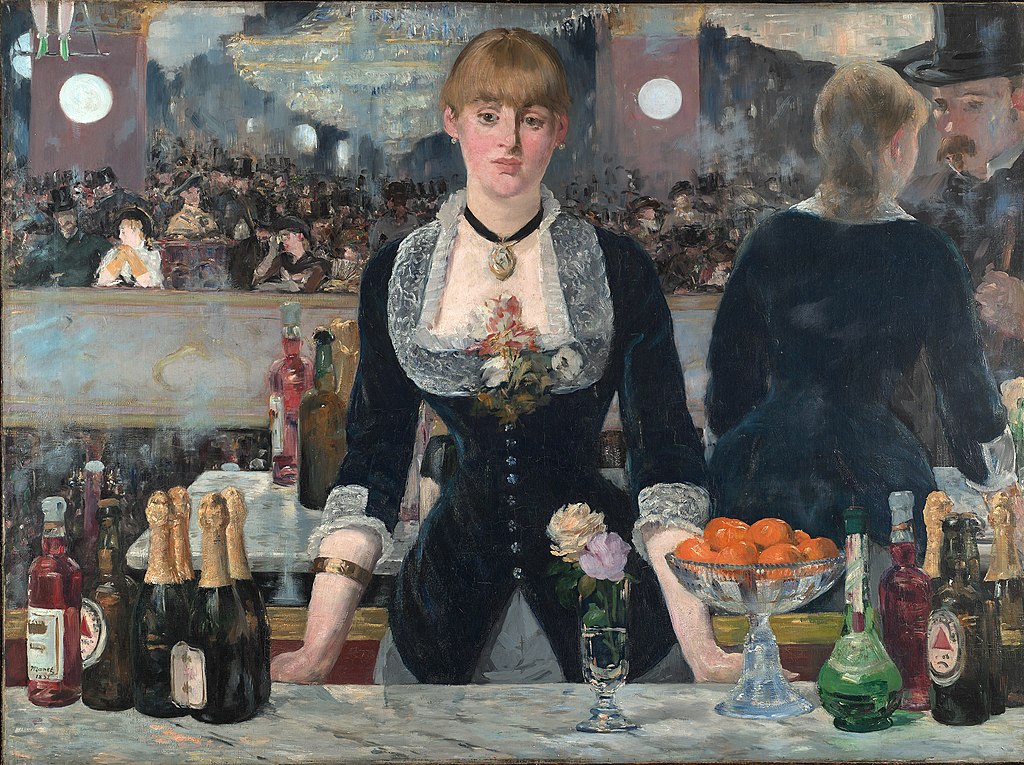
Manet was one of the first to take the French art world by storm, laying the foundation for impressionist painters such as Monet, Degas, Renoir, and Morisot to spread their wings.
(*Manet himself is not an Impressionist. (*Manet himself was not an Impressionist, although he laid the groundwork for it, and he supported the Impressionist group all the way through, but did not join it himself until the end.)
Zola was also quick to show interest in Manet's work, supporting him as a journalist and developing a friendship with him.
Because of this relationship, Manet painted a portrait of Zola, which is the most famous portrait of Zola.
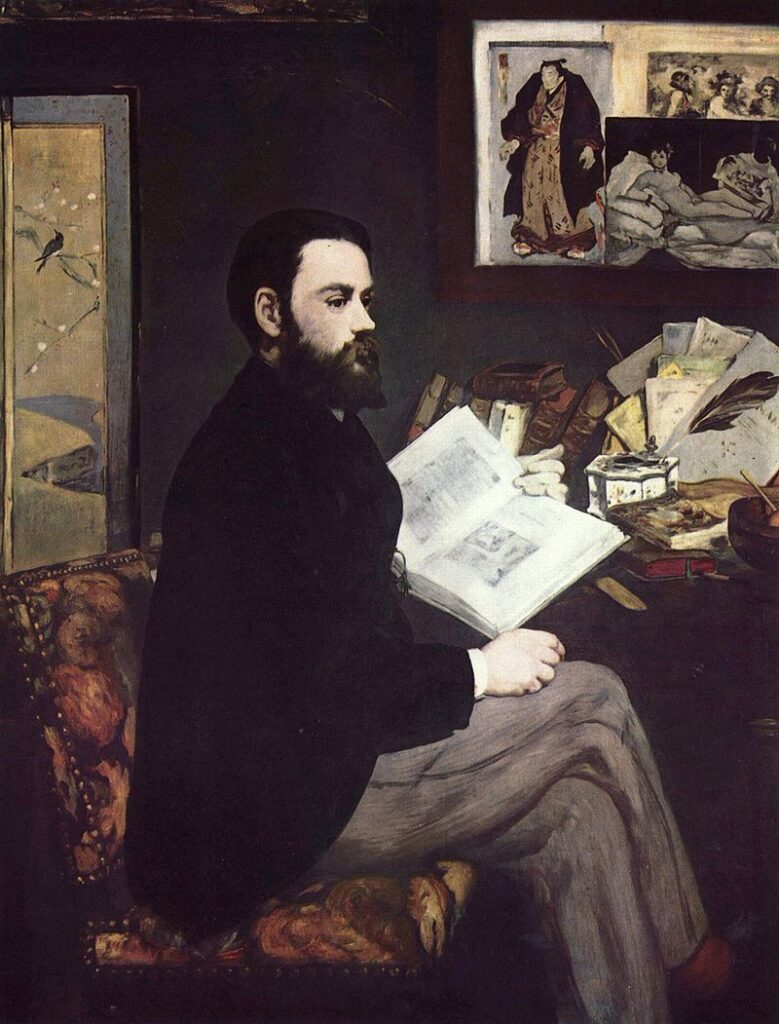
Zola backed Impressionist painters in many ways.
At the same time, Zola himself learned much from the keen sensibilities of the up-and-coming impressionist painters.
Both Impressionists and Zola were comrades-in-arms, pioneers of something new in a conservative age.
The relationship between the two was so deep that it could be said that without Impressionism there would be no Zola, and without Zola there would be no Impressionism.
Conclusion
My interest in Zola led me to an interest in Impressionist painting.
On the other hand, it is surely possible that those who are interested in impressionist paintings will connect with Zola's novels.
Impressionist paintings are said to be especially favored by the Japanese.
Finally, I would like to quote Kimura on why Japanese people prefer Impressionist paintings.
Japanese people do not like impressionist paintings solely for their monetary value. Japanese art traditionally has the theme of Kacho Fugetsu (flowers, birds, winds, and the moon), and at the same time, many ukiyoe paintings depicted landscapes and social customs. As a result, Japanese people, many of whom are non-Christians and therefore not familiar with the Bible and classical literature (Greek and Roman mythology), are very familiar with Impressionist paintings that depict landscapes, urban customs, and still lifes!
Shueisha, Taiji Kimura, "The Revolution of Impressionism," p. 46-47
You can't help but nod your head and say, "Hmmm, I see.
When you put it this way, don't you feel, strangely enough, that impressionist paintings are much more familiar to you?
While reading this book, I found myself looking at Impressionist paintings and before I knew it, I found myself falling in love with them. I was never that interested in French painting...
At any rate, I strongly felt that I would like to visit Paris someday to see the real works.
The above is "Taiji Kimura's 'The Revolution of Impressionism': Zola and French Impressionism - Relationship with Cézanne, Manet, and Monet".
Next Article.
Click here to read the previous article.
Related Articles












